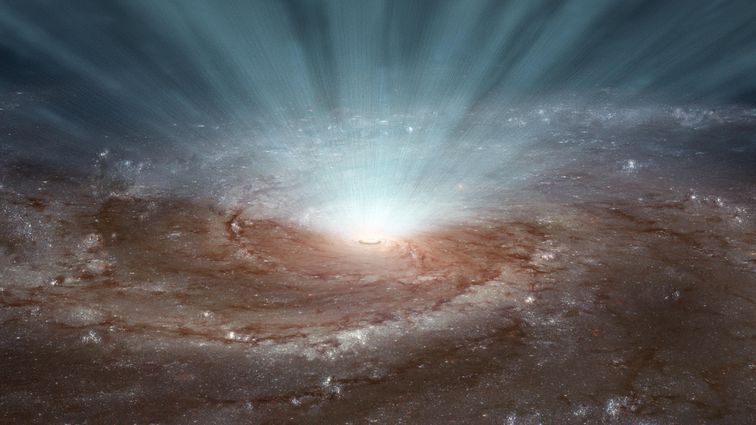Astronomers find bizarre planet ‘unlike any other discovered so far’ – CNET
The eccentric orbit of the massive super-Jupiter, HR 5183 b, overlaid on our solar system.
W.M. Keck Observatory/Adam Makarenko
Watching stars “wobble” is a tried-and-true method astronomers use to find huge planets lurking in the outer reaches of the cosmos. If a planet is big enough, its gravity tugs on its parent star just enough that we can see the faint changes in starlight. Using this method, a team of astronomers watched the star HR 5183 with three telescopes for 20 years and found a massive planet, around three times the mass of Jupiter, spinning around it on a highly unusual, egg-shaped orbit.
The new find, dubbed HR 5183 b, travels on an orbit that takes anywhere between 45 and 100 years. And its orbit is what astronomers dub “eccentric,” meaning it’s nothing like the circular orbits we see in our solar system. In fact, if you placed HR 5183 b in the solar system, the super-Jupiter would swing in near the sun closer than our own Jupiter and take it out beyond Neptune. Scientists have spotted comets and even other planets with elliptical orbits like this before — but generally they’re much closer to their home star.
“This planet is unlike the planets in our solar system, but more than that, it is unlike any other exoplanets we have discovered so far,” said Sarah Blunt, first author on the new study. The research is set to be published in The Astronomical Journal.
When the orbit is overlaid in our own solar system, it becomes impressively obvious just how unusual it really is:
HR 5183 b travels vast distances away from its star, so even if we keep our eyes peeled in the general vicinity it’d be almost impossible for us to see the planet directly. Instead, the astronomers looked at radial velocity measurements of HR 5183 collected over two decades from Hawaii’s W. M. Keck Observatory, the Lick Observatory in Northern California and the McDonald Observatory in Texas.
Radial velocity measurements allow astronomers to carefully examine the movement of a star in space. Due to a phenomenon known as the Doppler effect, when the star is moving farther away the wavelengths it emits decrease, and when it’s moving closer they increase. Astronomers can detect these fine changes in wavelength to determine how the star is moving.
Halfway through the period of observation, the team noticed that the measurements rapidly accelerated and then in 2018 flattened out again. That led the researchers to believe a new huge super-Jupiter was tugging on the star as it swung around it in a slingshot motion.
“We detected this slingshot motion. We saw the planet come in and now it’s on its way out,” said Andrew Howard, a professor of astronomy at Caltech. “That creates such a distinctive signature that we can be sure that this is a real planet, even though we haven’t seen a complete orbit.”
It may be unlike any other exoplanet we’ve seen, but that doesn’t mean these anomalous, eccentric orbits are uncommon across the universe. For instance, ex-planet Pluto has a rather strange orbit, as does Eris, another massive dwarf planet in our solar system. But HR 5183 b is weird — one of the weirdest exoplanet orbits we’ve seen — and it highlights how different planetary systems might be from our own.
It’s not the end of the line for HR 5183 b, either. The European Space Agency’s Gaia spacecraft has been surveying the sky since 2013, designed to measure stars in the cosmos with incredible precision. The research team indicates that this new planet will be detectable in Gaia data.
“This newfound planet is another example of a system that is not the image of our solar system but has remarkable features that make our universe incredibly rich in its diversity,” said Howard.

16 Photos






